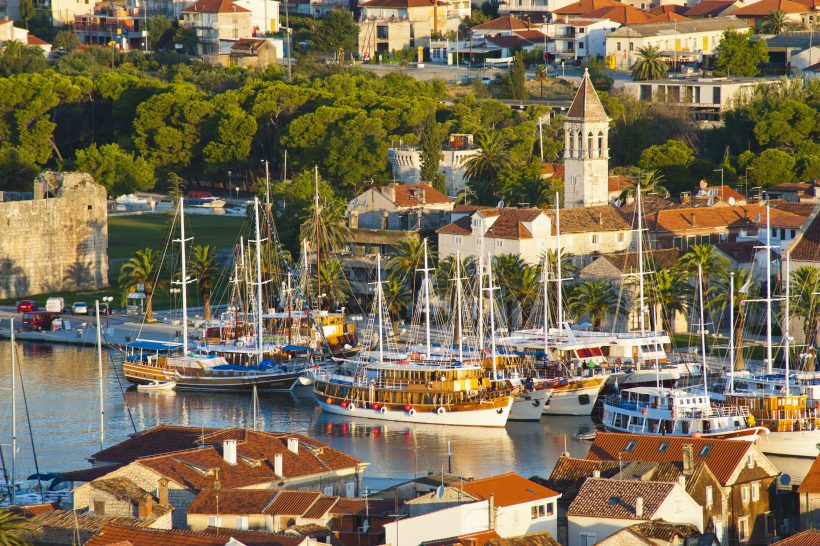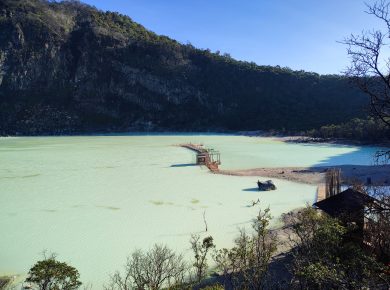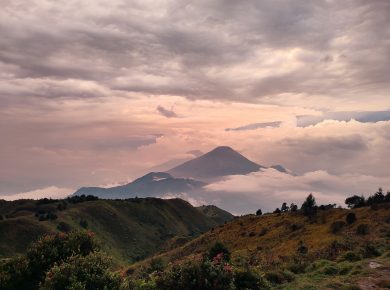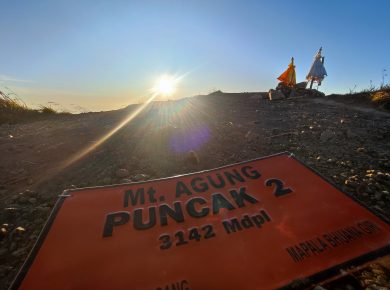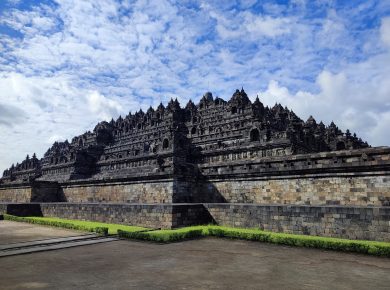The Dalmatian coast in Croatia is considered one of the most picturesque in Europe. Even if you suddenly haven’t heard anything about the Seven Kingdoms (really?), it doesn’t change anything. The series is over, but the beauty remains. We’ve gathered for you eight top locations along the road from Dubrovnik to Šibenik: the King’s Harbor and the Immortal Tower, the Red Castle Gardens, and other Westeros landmarks. Admire.
Contents
Dubrovnik
The southernmost, easternmost, and most beautiful of Croatia’s cities. It is also the most expensive. Food, accommodation, and souvenirs here are 20–30% more expensive than in neighboring resorts—you just have to put up with it. For those who are familiar with the subject, the Royal Harbor, the Red Castle, the Immortal Tower, and other sights of Westeros will be recognized without problems. They’re everywhere. Filming has covered the old city, the suburbs, and even the looming island of Lokrum. Its main attraction used to be a nudist beach. Today, there is a replica of the Iron Throne. In summer, private boaters take tourists to Lokrum non-stop. During the cold season, it is not inhabited at all.
From the seaside, Dubrovnik is somewhat similar to Malta’s Valletta. The imposing fortifications already put pressure on any enemy by their very appearance. The thought of storming it immediately seems like a waste of time. The last siege Dubrovnik withstood was in the 1990s of the last century, during the Balkan wars after the collapse of Yugoslavia. There are enough shrapnel marks on the walls.
The best way to see the city is to walk around the perimeter of the fortress. The entrance is just outside the main gate of Pile. The length is 2 km. From the height, you can snap one and a half kilograms of good photos, looking into the yards of local residents on the way. Attention test: Count 50 shades of red in a sea of tiled roofs. Now come on down. It’s completely free to walk along the perfectly straight main street, Stradun, whose paving stones are so polished by travelers that they resemble a black mirror. Stradun begins right behind the main gate with the Onofrio Fountain. It looks like a huge tandoor oven with mascarones. The water is spring water—drink it on the spot and stock up for the road. They say that if you drink from all 16 taps, you will get your wish.
At the opposite end, Stradun flows into the Market Square with the local Doge’s Palace and the Church of St. Vlach (the patron saint of Dubrovnik). Another patron saint, the knight Roland (aka Orlando), is on a stone watch next to it, propped up by an unassuming pillar. According to legend, the hero of the French epic once defended the city from the Turks, and then the practical Dubrovnik merchants used the knight’s elbow as a measure of length. If you go to the left from Roland, you will reach the Dominican Monastery, which has a wonderful shady courtyard, especially relevant on a hot day. Turn right, and you’ll find yourself under the stairs of the Jesuit church, also featured in Game of Thrones. Once you’ve had your fill of jostling in the center, dive into one of the streets diverging perpendicularly from Stradun. And there you can find whatever your heart desires: a glass of thick local wine sitting right on the stone steps at the Skaramuca bar (Dropčeva,7), strong coffee at the Libertina café (Zlatarska, 3), or three dozen varieties of ice cream at Dolce Vita (Nalješkovićeva, 1).


Trsteno
20 kilometers west of Dubrovnik is a peaceful place where almost all the characters of “Thrones” plot against each other. In the saga, it is the gardens of the Red Castle. In real life, it’s the Trsteno Arboretum. Established five centuries ago, today it is experiencing its second heyday. The arboretum is full of secluded nooks and crannies, both those that appeared in the movie and those that you can discover on your own. For example, the old aqueduct wrapped in ivy, the Balkan jungle, terry bougainvillea, and lazy cats under the columns. If Dubrovnik won’t give you any privacy, Trsteno is the place for zen.
Here, you can also have a snack at the Konoba Canossa. The choice of dishes is not too big, but the fish is the freshest. And the prices are lower than in Dubrovnik. Pay attention: right after Trsteno, the famous vineyards of Peljesac begin. So order the wine of the same name for lunch or dinner.
How do I get there? You can get there from Dubrovnik by car in 15 minutes, and you will be driving over the sea all the time. If you choose public transportation, first take bus 1 or 8 from the old town to the bus station, and from there take another bus (12, 15, 22, 26, 35) directly to Trsteno.

Split
After skipping the Makarska Riviera, you get to Split, a place with not only the best beaches but also decent architecture. And the whole must-see list is collected within one square (about 200 by 200 meters), which was once called Diocletian’s Palace. It is similar to the Roman Forum, only the ancient Roman heritage is mixed with chaotic medieval buildings, which are difficult to navigate.
So, what should you look for? The Game of Thrones Museum (Bosanska, 9), which just opened in 2019. The highlight of the exposition is the dungeon where the dragons were kept. In addition, there are heroes’ moulages, costumes, utensils, and so on. As a souvenir, you can buy posters with episodes of the filming. Next, move towards the Temple of Jupiter (Svetog Ivana, 2). If you get there by 12:00, you will get to see a short costume show on the theme “Hail, Caesar!”. Near the entrance to the Cathedral. It’s worth a visit for the filigree altar by the hand of Jurij Dalmatian, who in Croatia is akin to Michelangelo for Italians.
You can eat on the territory of Diocletian’s Palace at every second entrance, cellar, and balcony. Nevertheless, it is not easy to find a cozy place. Here are a few tried and tested spots: Zalogajnica Bifora (Bernardina Splicanina, 5)—in the rear of the Museum of Games on a tiny street, where not everyone wanders. That’s why it’s not noisy and not very expensive. More expensive, but artistic, food is available at BEPA! (Narodni Trg. 1). This address is the most spacious square in the old town, and one-third of it is occupied by restaurant tables. For coffee, we recommend D16 (Dominisova 16), a compact café with colorful and skillful baristas. Here, you can stock up on a liter of specialty iced coffee for the whole day.
After refreshment, you can go to the fortress of Klis, which played the role of Meereen, the city of slave traders, in “Thrones”. Municipal bus #22 runs that way once every hour and a half (schedule here). Your stop is the Croatian National Theater (HNK). You need to go to the northern gate of Diocletian’s Palace (where there is a huge statue of a certain Grgur Ninski) and then walk a little to the left.
Imotski
This is the only place where we’ll deviate from the coast and dive into the Croatian countryside. A provincial town almost on the border with Bosnia appears in the series only in season 5. Apparently, no one told the filmmakers about it before. There are two amazing lakes near the town—Blue and Red. The first is named for the color of the water, and the second for the color of the stone walls. The lakes appeared in deep, extinguished craters. And you can bathe in Blue Lake by going down the zigzag path. But remember: then you have to climb back up, and in the heat, it is torture. Even throwing pebbles into the Red Lake is forbidden—it is a protected lake (and one of the deepest in Europe). In addition, Imotski has an old fortress, where they also filmed a couple of episodes, and an adorable soccer stadium, marvelously inscribed in one of the mountain basins.
How do I get there? By car from Split, it takes a little over an hour to get here along serpentine roads. By bus—almost two. And it is better to get up early to have time to see everything and get back—there are not many flights.


Kaštela
If the Royal Harbor was in Dubrovnik, the Braavos marina was in Kaštela Gomilica, just outside Split. In everyday life, the photogenic local castle (built according to the Venetian model—the front exits directly into the water) functions as an ordinary residential house. Some of the rooms are rented out to tourists, while the rest continue to be inhabited by native Castelanes. Everyone seems to be used to the gawkers.
Kashtela is a conglomeration of seven villages (almost the Seven Kingdoms), stretching in a string along the coast for 13 km. In general, it is a good old place, where, in the evenings, neighbors move tables in common courtyards and sing beautiful Dalmatian songs. Here they produce their own unique type of wine—Crlenjak—and grow the best cherries in the area. There are several other Gomilice-like castles scattered around the villages of Kaštela, and in Kaštela Štafilic, the world’s oldest olive tree grows. More precisely, one of those claiming this title.
How do I get there? Kaštela is connected to the surrounding world in a very convenient way. Every 20–30 minutes, the 37 bus between Split and Trogir passes through it. You need to go to Trogir as well. But on the way, it would be nice to stop at the best beach in the area, Baletna Skola in Kaštel Kambelovac, order black risotto in the restaurant of the same name, listen to the cicadas, and breathe in the pine trees.
Trogir
If you arrive by plane in Split, don’t believe the ticket. You are actually arriving in Trogir. The airport is located just outside the city limits, and upon landing, you can see through the porthole how interesting Trogir is. All the oldest and most valuable parts are squeezed on a small piece of land between the mainland and the heavy island of Ciovo. It’s even a bit scary to think that these two enormous buildings will crush the graceful and fragile town. But nothing like that; Trogir has been thriving for more than a thousand years. The local monastery of St. Dominic, which is only slightly younger, made its debut in Game of Thrones a couple of years ago, along with the bastions of the town’s Kamerlengo Fortress.
In Trogir, you’re supposed to look up. Then you’ll notice the painted ceiling in the Giant City Lodge, the hand sticking out of the wall with a huge wooden rooster in the Cippico family home, and the contrasting facial expressions of Adam and Eve beneath the cathedral.
In Trogir, a three-course lunch menu for the price of one is offered by almost every eating place. Restaurant Monika (Budislavićeva,12) includes excellent fish, while Skrapa (Hrvatskin Mucenika, 13) offers a shot of plum vodka for lunch on the house.


Sibenik
The stakes of the Faceless Men and the Iron Bank were placed in Sibenik by the creators of the series. It is an hour and a half drive northwest of Trogir. The road loops picturesquely over the sea. But it’s even cooler to swim into Sibenik. The city hides in a quiet lagoon, and to get to it, you have to pass an archipelago of coastal islands and then squeeze through the neck of the narrow and fortified St. Anthony. Therefore, the city suffered little from raids. In the Middle Ages, the Turks repeatedly tried to capture Sibenik but failed, and in World War I, they successfully fought off the Italians. All this allowed the town to retain its wealth. This is how it remains.
The local St. James Cathedral is probably the most beautiful in Dalmatia (sorry, Split, sorry, Dubrovnik). It resembles an elegant Renaissance casket and would look quite dignified even in Florence. However, the inside of the box is almost empty—the interior is quite modest compared to the facade. It is much more entertaining to wander through the steep streets and staircases of Sibenik, with its characteristic tiered buildings. The St. Michael’s Fortress (another game capital location) is perched on the very top. You can take a break in the middle of the climb under the walls of the St. Lovre Monastery (Strme Stube, 1), where there is a cute café in a mini garden. Pasta, salads, and fresh apple and spinach smoothies are available. For a more substantial lunch, head up another tier. There, on Trg Puckih Kapetana 1, you’ll find Tinel. Not all tourists come here, so there are always free seats, and you don’t have to wait half a day to order. Try the pašticada—veal meat stewed in prune sauce.


Krka
The park occupies a huge area along the mouth of the Krka River. But the main interest is in the lower (southern) part—Skradinski beech. It is a must-see.
Krka National Park was chosen for its exceptionally beautiful picture in the series. And who wouldn’t have taken it: A 7-level cascade of waterfalls—you can’t make such a thing in a studio. And here, nature itself tried instead of decorators. The viewers of the series were lucky that all the tourists were banished from the frame. You are unlikely to be so lucky. In season, the waterfalls are crowded with visitors. In the lower bowl, where you can swim, they are stuffed like sinners in a cauldron. The park administration has laid kilometers of boardwalks all over the territory but, unfortunately, has not arranged a single normal descent into the water. Neither did they forbid climbing there, so if you want to take a dip in the waterfall, you have to climb the boulders at your own risk. If you don’t want to, climb higher. There are several dizzying observation platforms there, and half of the crowd will drop out on the way.
How do I get there? There are several ways to get to the park, but the best way is to drive up from Šibenik to the town of Skradin. Firstly, the entrance itself is a colorful serpentine with postcard views. Secondly, from the town pier, you will be taken directly to the reserve by a shuttle boat, which is included in the price of the entrance ticket.


